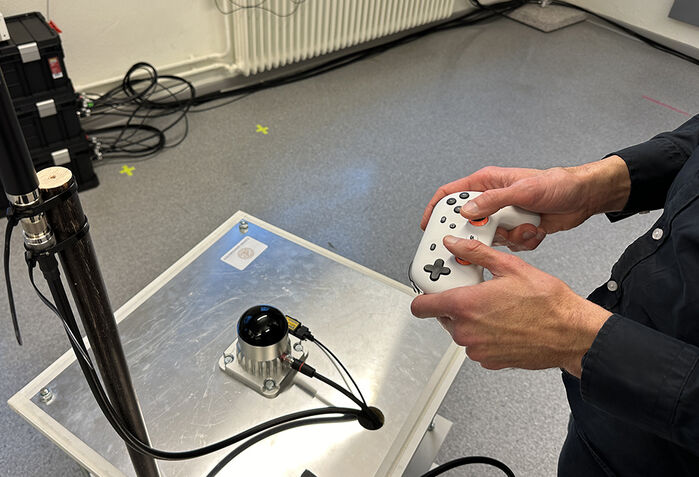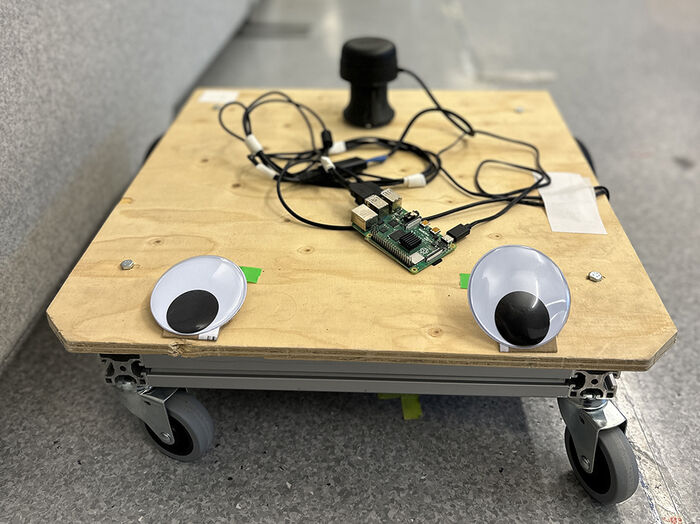Energy efficiency key for future 6G technology
Everyone is familiar with the frustration that comes when otherwise excellent mobile phone reception suddenly drops out. The moment when all mobile communication becomes impossible. But why does this happen and what is really behind the numbers 3G, 4G, 5G, and the 6G to come?
Jessika Sellergren – Published 20 February 2024

Fredrik Tufvesson is a professor of Communications Engineering at LTH. He is in the midst of developing 6G technology for use in the 2030s, even though consumers have barely had the chance to use the fifth generation of this technology.
Sixth-generation technologies are expected to be more energy efficient than 5G, with smart cities, autonomous vehicles and health tech applications. The aim is to contribute to the development of technologies with a lower carbon footprint.
Evolves in cycles
“The communications sector is a large consumer of energy – about two per cent of global emissions are attributable to it – but the technology also makes it possible to reduce emissions of other sectors by up to 15 per cent,” says Fredrik Tufvesson.
Communication technologies tend to evolve in ten-year cycles. The 1980s saw the advent of the portable phone, which many people remember as a telephone handset secured to an attaché case with a twisted phone cord.

Fredrik Tufvesson gathers data in order to evaluate the new 6G-technique. Photo: Jessika Sellergren
“The first analogue mobile phone used 1G. The sound was sent in analogue form, much like a walkie-talkie. The sound quality was poor by today’s standards, the battery life was terrible and the case was heavy.”
Digital telephony made its debut in the 1990s. It started with the GSM phone, also described as the second generation of mobile phone technology. GSM stands for “Global System for Mobile Communications” and made international communication possible.
“At the same time, SMS digital text messaging was introduced. Each message was limited to a maximum of 160 characters, and it was big business for telecom operators who charged for each SMS sent.”
Edge came before 3G
The next big generational leap was made when 3G technology made sending voice, images and multimedia possible.
“Actually, EDGE – the E instead of 2G, 3G etc in the top corner of the mobile screen [AH1] – came before that, as a further development of 2G technology. EDGE is still used for some connected technologies, for old systems or where coverage is poor.”
Fredrik Tufvesson describes the fourth-generation technology as carrying the internet in your pocket. With 4G, videos can be sent, and mobile phones are used as small computers – a development that has led to ever-increasing data consumption.
Fredrik Tufvesson explains how the volume of data is calculated. One character in a text message is equivalent to eight bits, which becomes 1280 bits for a 160-character text message. The data needed to send a photo is many times larger – around 40 million bits.
“Our needs and behaviours require increasing amounts of data and higher speeds. We can no longer rely on fourth and fifth-generation technologies for what we want to do.”
Higher degree of performance with 5G
One such desire is to control devices in real time. Fredrik Tufvesson explains by making a comparison to a robot on a factory floor.
“The robot moves and delivers things, but it cannot yet talk to other devices in its environment. With fifth-generation technology, the robot can perform more services, act spontaneously, and solve unexpected situations, such as a blocked path ahead.”
Despite these cyclical leaps in technology, sometimes our phones jump back a couple of decades and 3G appears in the top right corner instead of 5G. This is due to the degree of coverage of the base stations and which mobile operators have stations in different parts of the country.
“Creating coverage is expensive, and to keep costs down, priority is given to the areas with the most people. Here, many base stations are built to ensure high capacity. This means that the electromagnetic signal strength can be reduced for each base station, leading in turn to better energy efficiency and lower radiation levels,” says Fredrik Tufvesson.
“If we want vibrant rural communities, we must ensure that we have fully-fledged digital services in these areas as well.”

Despite the homemade feel, the lab is technologically advanced and at the forefront of 6G technology. Photo: Jessika Sellergren
In the Wireless Systems and Applications Lab at LTH, Fredrik Tufvesson is steering a robot on a roller table using a controller similar to the ones used in computer games. The table has been decorated with a pair of eyes to make it look more like a robot. Despite the homemade feel, the lab is technologically advanced and at the forefront of 6G technology.
Energy consumption is increasing with AI and machine learning. The aim is to further reduce energy consumption per bit, which is now being tested in various ways in the lab.
Already 7G in mind
“Not only does technological development need to recognise the impact of energy consumption on the climate, but people themselves need to become better at opting out of or shutting down unused technology.”
Of course, Fredrik Tufvesson already has his eyes on the development of 7G. He predicts that the sixth-generation technology will be the last technological leap to be centred on phones.
“There is no indication that the amount of data will decrease, but telephone functionality will most likely be embedded in other technologies and devices we use daily.”

Fredrik Tufvesson
Fredrik Tufvesson is a professor of Communications Engineering at LTH and coordinator for the LTH profile area AI and digitalization.
Fredrik Tufvesson — Lund University
The evolution of mobile communications at a glance
- 1G – the first analogue mobile phone arrived in the 1980s
- 2G (GSM) – digital transmission and SMS came in the 1990s
- 3G – the first step towards sending multimedia content was taken in the 2000s
- 4G – internet arrived in everyone’s pocket in the 2010s
- 5G – intelligence moves to data centres, “clouds”, and the first steps are taken towards real-time control in the 2020s
- 6G will arrive around 2030
The article is originally published in LUM, Lund University Magazine, 1:2024:
Energy efficiency key for future 6G technology | Staff Pages (lu.se)
